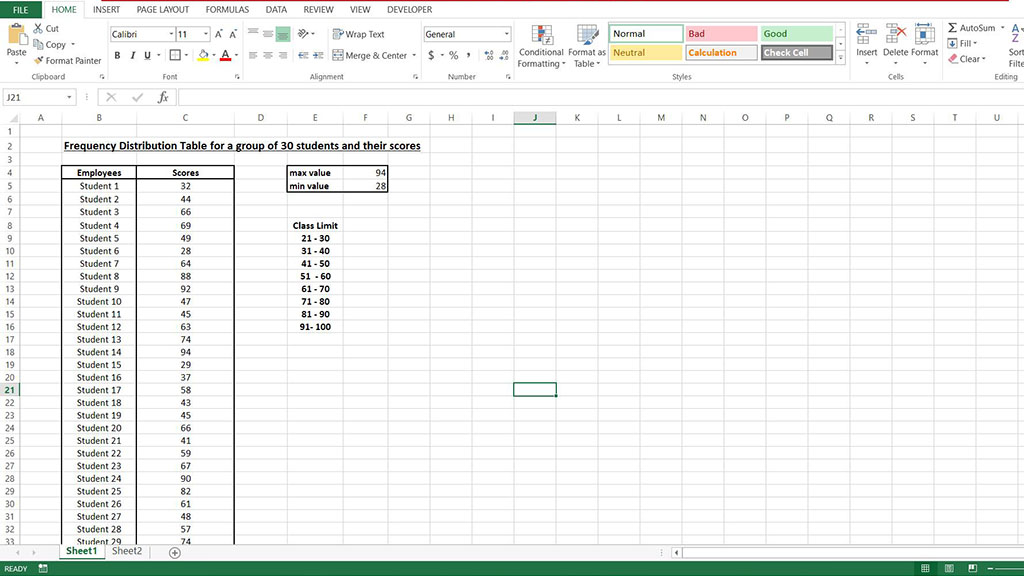5 Easy Ways to Find Frequency in Excel

Understanding Frequency Distribution in Excel

Excel is a versatile tool widely recognized for its data analysis capabilities. One common task data analysts and researchers encounter is calculating and analyzing frequency distributions. Frequency distribution helps us understand how often different values or categories occur within a dataset. This article will guide you through five straightforward methods to find and analyze frequency in Excel, enhancing your data interpretation skills.
1. The Manual Count Method

The simplest way to count frequency manually involves using pivot tables or simple formulas:
- Select your data range.
- Go to Insert > PivotTable.
- Drag the variable of interest into the Rows box and the Count of variable into the Values box.
📝 Note: This method is ideal for small datasets as it is quick but might not be efficient for larger ones.
2. Using Excel Functions

Excel offers several functions that can help determine frequency. Here are two common functions:
Frequency Function
The FREQUENCY function is an array function that returns how often values occur within a given range. Here’s how you do it:
FREQUENCY(data_array, bins_array)
data_arrayis the range of data you want to analyze.bins_arraylists the upper limits for your data.
| Example Data | Bins | Frequency |
|---|---|---|
| 1, 2, 3, 4, 4, 5, 5, 5 | 2, 4, 6 | 3, 2, 3 |

COUNTIF Function
When you are dealing with a single value or a single range:
=COUNTIF(A1:A10, 5)
This formula will count how many times the number 5 appears in cells A1 through A10.
📝 Note: Use COUNTIF for simpler, single criteria counts; FREQUENCY for more complex binning needs.
3. Excel Data Analysis Toolpak

If your dataset is large, or if you need to perform extensive statistical analysis, the Data Analysis Toolpak can be a powerful ally:
- Enable the Toolpak if not already active (File > Options > Add-ins > Go > Analysis ToolPak).
- Navigate to Data > Data Analysis.
- Select Histogram and follow the wizard to input your data range and bins.
4. Conditional Formatting for Visual Analysis

Conditional formatting can be used for a visual representation of frequency:
- Select your data.
- Choose Home > Conditional Formatting > Data Bars or Color Scales to visually represent frequency.
This method doesn’t provide exact numbers but instantly reveals frequency distribution patterns.
5. Using VBA for Custom Analysis

For those with programming skills, VBA can offer a custom solution:
Sub FrequencyCount()
Dim data As Range, cell As Range
Dim freq As Collection, item As Variant
Set freq = New Collection
' Set your data range
Set data = Range("A1:A100")
On Error Resume Next
For Each cell In data
If cell.Value <> "" Then
freq.Add cell.Value, "k" & cell.Value
End If
Next cell
' Output to Sheet
Set outRange = Range("D1")
For Each item In freq
outRange.Value = item
outRange.Offset(0, 1).Value = WorksheetFunction.CountIf(data, item)
Set outRange = outRange.Offset(1, 0)
Next item
End Sub
This script creates a collection, counting each unique value's frequency and outputs the results in two adjacent columns.
🔧 Note: VBA requires enabling macros, which might not be suitable for all users or environments.
By mastering these methods, you'll be able to analyze and interpret frequency distributions with ease, turning raw data into insightful statistics. These techniques cater to different scenarios, ensuring you have the tools needed for basic to complex data analysis in Excel. The versatility of Excel lies in its ability to cater to various levels of user expertise, from beginners with manual counts to advanced users leveraging VBA scripting.
What is Frequency Distribution?

+
Frequency distribution is a table or chart that shows how often each value occurs within a dataset, providing insights into the distribution of data.
Why is it important to analyze frequency in Excel?

+
Analyzing frequency in Excel helps identify patterns, trends, and variability in data, which is crucial for making informed decisions in various fields like business, finance, and research.
Can I use Excel for large datasets to calculate frequency?

+
Yes, Excel’s Data Analysis Toolpak is designed to handle large datasets for frequency analysis, offering robust tools for statistical analysis.